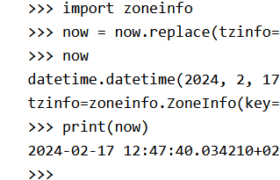In F5 BIG-IP devices there is iControl REST API for interfacing with the devices programmatically. In this post I’ll briefly describe the basics of using the API in Python. I’ll be using BIG-IP version 17.1 here with a separately created non-administrator user account. For starters I’ll use a Python virtual environment to contain the separately-installed […]
Category: Programming
Amazon SQS Long Polling
I’ve recently used various kinds of message queues when building various apps that have needs to communicate with other parts of the app. For remote use, when the messaging parties are not on the same host, I’ve mostly used Amazon SQS, the Simple Queue Service. When using the SQS ReceiveMessage API call you can select […]
Wireshark Development on Linux
I have made occasional contributions to the Wireshark project for over five years now. I started with small documentation updates, and later I have added two new protocol dissectors (Zabbix and Z21) as well as improved some other dissectors. It can be several months between contributions though, so this post is my own memo about […]
Exception
In Python, sometimes you just need to catch all exceptions and show which one was it:
More Mocking with Pytest
In my Basic Mocking with Pytest post I showed simple cases. Now let’s do more mocking. First I’ll create the environment for my code: $ mkdir more-mocking$ cd more-mocking$ python3 -m venv venv$ . venv/bin/activate(venv)$ pip install -U pip wheel…Successfully installed pip-24.0 wheel-0.43.0(venv)$ pip install pynetbox pytest…Successfully installed certifi-2024.2.2 charset-normalizer-3.3.2 idna-3.7 iniconfig-2.0.0 packaging-23.2 pluggy-1.5.0 pynetbox-7.3.3 […]
NetBox Plugins to Present External Data
I have worked with NetBox for over five years now, and NetBox plugins feature has existed since version 2.8 in April 2020, but it was only recently that I got a need to start leveraging plugins to extend the NetBox functionalities. Most of the publicly available plugins work with Django model-based data that is saved […]
Datetimes with Timezones in Python
First, let’s show how the commonly-used plain datetime.datetime.now() gets the local time but does not have a timezone: >>> import datetime >>> now = datetime.datetime.now() >>> type(now) <class ‘datetime.datetime’> >>> now datetime.datetime(2024, 2, 17, 12, 47, 40, 34210) >>> print(now) 2024-02-17 12:47:40.034210 >>> now.tzinfo is None True >>> Let’s add timezone to it, using the […]
Compressed Data Between PowerShell and Python
I have built an application that transfers JSON data between remote PowerShell and Python components using Amazon SQS (Simple Queue Service). The size of the data is usually quite small, fitting nicely into the 256 KiB message size limit of SQS, letting me avoid complex multi-message handling or temporary S3 objects. In specific cases, however, […]
Network Interface Name Sorting in Python
Evergreen problem in sorting strings: How do you implement human-expected ordering when the strings have varying-length numbers in them? Prime example in the networking world is network interface naming in various devices. Example: >>> interfaces = [“1/1/1”, “1/1/2”, “1/1/10”, “1/1/11”, “1/1/10.32”, “1/1/10.311”, “1/1/10.312”, “eth-1/1/1.1”, “eth-1/1/1.2”, “eth-1/1/1.10”]>>> print(“\n”.join(sorted(interfaces)))1/1/11/1/101/1/10.3111/1/10.3121/1/10.321/1/111/1/2eth-1/1/1.1eth-1/1/1.10eth-1/1/1.2>>> That’s not ideal as the default string sorting […]
Parametrizing Test Functions with Pytest
I will first create a class that is used for representing the Zabbix protocol flags (zabbix_flags.py): Subclassing enum.IntFlag is very suitable for this purpose, and enum.auto() can be used to represent the flag values. I have four test functions to check that the flag values work as expected (test_zabbix_flags.py): Let’s create a virtual environment and […]







